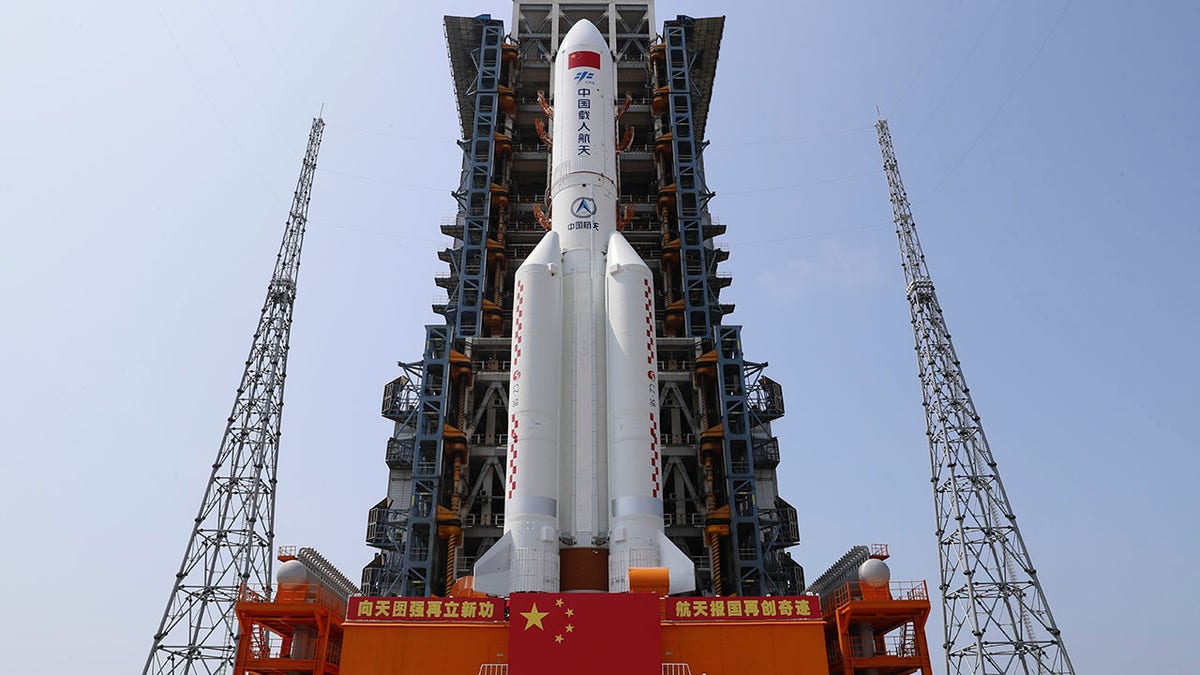Fox News Flash top headlines for July 24
Fox News Flash top headlines are here. Check out what's clicking on Foxnews.com.
China launched its second of three space station modules into orbit on Sunday, leaving the country with just one final step before it has a fully operational station.
The Taigong space station is expected to be manned and operational by the end of 2022, and the third and final module is scheduled to launch in October. Sunday's module contains three sleeping areas and space for scientific research, according to the Agence France-Presse.
Taigong translates to "heavenly palace" in English.
If completed successfully, the station is expected to last more than 10 years in orbit.
FIRST ALL-PRIVATE HUMAN SPACEFLIGHT LAUNCHES TO SPACE STATION

In this photo released by China's Xinhua News Agency, a Long March 5B rocket carrying a module for a Chinese space station lifts off from the Wenchang Spacecraft Launch Site in Wenchang in southern China's Hainan Province. (Jin Liwang/Xinhua via AP)
Chinese astronauts returned from a six-month trip aboard the first module in April. The team was tasked with finalizing preparations for the module, which originally launched in April 2021.
Sunday's launch of the second module was unmanned.
CHINA PLEDGES TO CONTINUE TO ‘MODERNIZE’ NUCLEAR ARSENAL, CALLS ON US, RUSSIA TO MAKE GREATER CUTS

In this photo released by Xinhua News Agency, the core module of China's space station, Tianhe, on the the Long March-5B Y2 rocket is moved to the launching area of the Wenchang Spacecraft Launch Site. (Guo Wenbin/Xinhua via AP)
China must rely on its own space stations after it was barred from accessing the International Space Station over U.S. objections.
Chinese investment in spaceflight and other rocket technology comes amid an ongoing arms race with the U.S. and Russia. All three countries are currently developing hypersonic weapons.
The U.S. successfully tested a hypersonic missile off the California coast in early July.
CLICK HERE TO GET THE FOX NEWS APP
The Lockheed Martin-produced missile is designated the Air-Launched Rapid Response Weapon (ARRW). Hypersonic weapons fly in the upper atmosphere and reach incredible speeds of up to Mach 5, or more than 3,800 miles per hour.





















